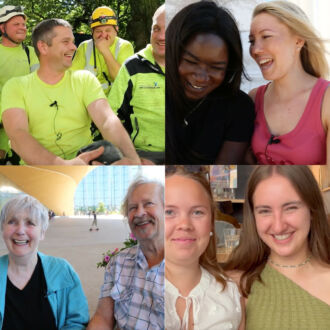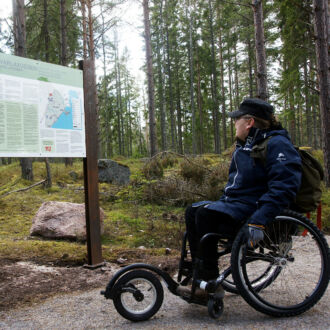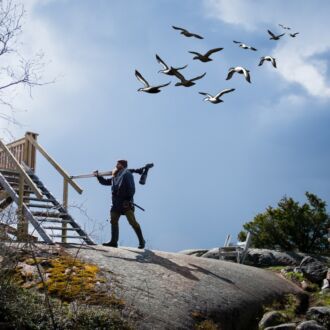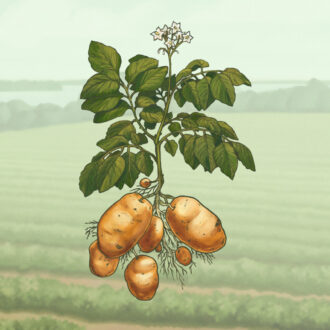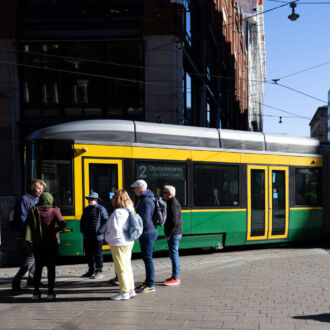In Finland, one nurse is working to redefine how we care for the elderly. Sanna Kosonen, a pioneer in foster care for ageing individuals, believes we can create a more compassionate and sustainable system – one that allows the elderly to live with dignity in home-like settings.
This vision is more than just a local initiative; it addresses a global challenge. As populations age rapidly worldwide, Kosonen’s innovative approach offers insights that could benefit societies far beyond Finland.
A home away from home
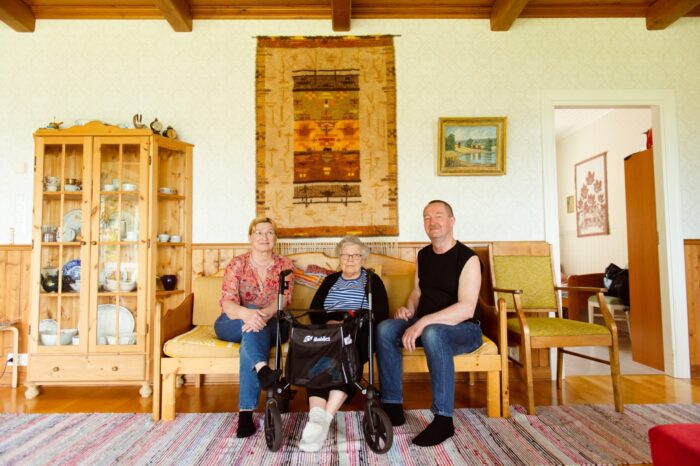
Eeva Nenonen (left), Kerttu Korhonen and Jukka Nenonen share everyday life in a family-style foster home. Korhonen, an avid crafter, has knitted potholders during her stays.
Travelling to Kitee, a small town in the easternmost part of Finland nestled among lush forests and serene lakes, feels like stepping into a postcard. Here, the family foster care model has taken root, offering an alternative to traditional nursing homes.
One shining example is the Nenonen foster home. Down a country road surrounded by fields and woods, the yellow wooden house stands as a sanctuary for elderly residents. Inside, 87-year-old Kerttu Korhonen watches Who Wants to Be a Millionaire in the cosy living room, her walker within reach. She spends two weeks each month here, then returns to her home in a neighbouring town.
“It’s wonderful here,” she says. “Time passes so pleasantly.”

Foster carers often form close bonds with the elderly in their care. Talking about death is not unusual, as carers strive to honour each resident’s wishes for a good death.
In the kitchen, foster carer Eeva Nenonen stirs a pot of chicken soup while her husband Jukka talks about a recent fishing trip. Large windows overlook fields and Lake Kitee. For the residents, the atmosphere is both calm and familiar – more like a family gathering than a care facility.
The foster care model
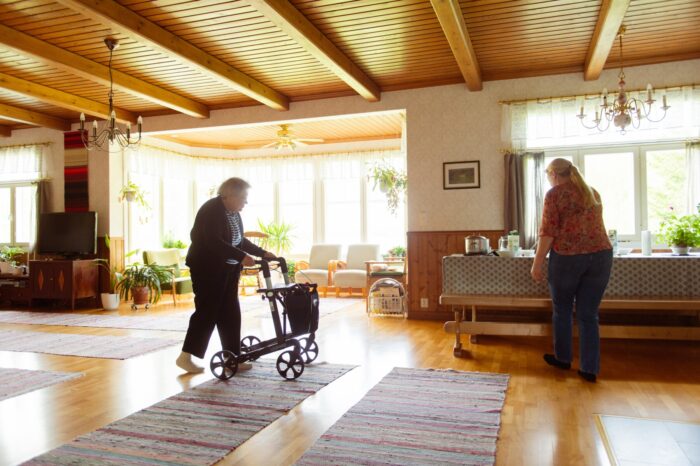
The Nenonen foster home can accommodate four elderly residents at a time. Jukka and Eeva Nenonen take two weeks off every month to relax and go fishing.
The adult foster care of older adults, spearheaded by Sanna Kosonen together with the Foster Care Association of Finland, offers elderly individuals the chance to live in a family-like environment. Caregivers open their homes, providing short- or long-term stays, or alternatively, visit elderly individuals in their own homes.
For foster carers like Eeva and Jukka Nenonen, the arrangement has been transformative. After their five daughters left home, the couple adapted their house to accommodate elderly residents. They fitted bedrooms with senior-friendly beds and emergency call buttons. The house’s layout, already designed for accessibility, needed only small changes.
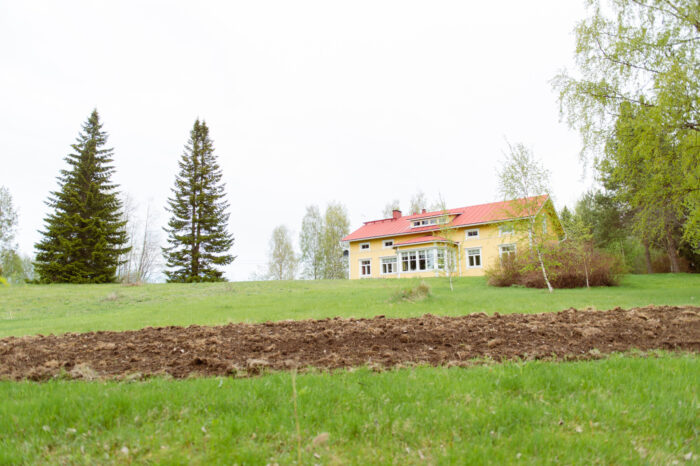
Foster homes for the elderly are so popular in many areas in Finland that there aren’t enough places for seniors. New foster carers are urgently needed.
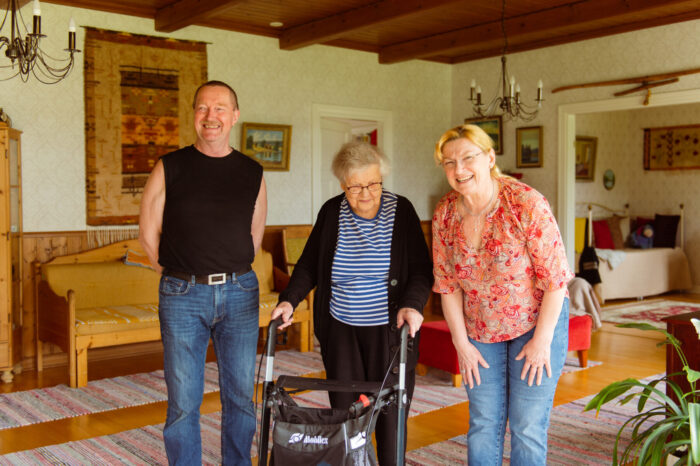
Jukka Nenonen, Kerttu Korhonen and Eeva Nenonen have known each other for a year. Korhonen first visited for a short stay, which soon turned into a longer arrangement after everything went smoothly.
The benefits are clear: residents receive personalised care, daily companionship and a renewed sense of belonging.
“Elderly people often feel like a burden,” Kosonen says, “We need to change this mindset. Ageing is not a disease. Everyone deserves to live a meaningful life, even in old age.”
The model encourages residents to take part in daily life – helping with meals, setting the table or simply enjoying the company of others. This fosters both physical and emotional wellbeing. Many experience a profound transformation, regaining vitality and joy.
“One of our residents said they wished they had come here years earlier,” Eeva Nenonen recounts.
Reconnecting with nature
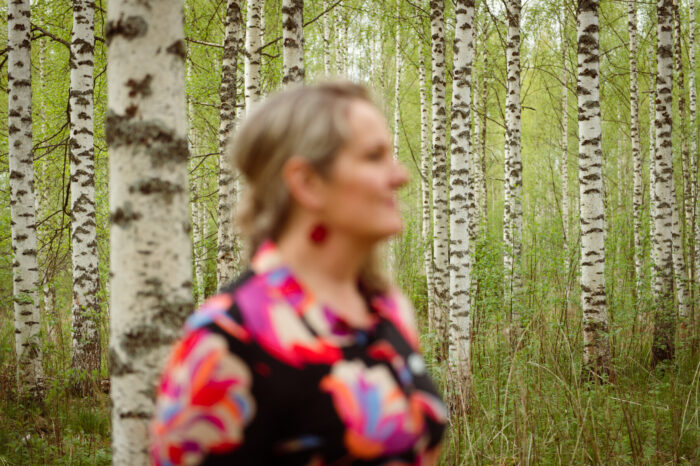
Over the course of about fifteen years, Kosonen has trained hundreds of foster carers and supported numerous foster homes.
Nature plays a central role in Kosonen’s vision.
“For someone who has lived close to nature their whole life, why should that connection end in old age?” she asks.
At foster care homes like the Nenonens’, elderly residents can reconnect with the outdoors, whether by picking berries, going fishing or sitting around a campfire. Even simple pleasures, like the taste of fresh raspberries or the scent of lilacs, can awaken cherished memories in those with dementia.
“At one point, a resident told me, ‘In the forest, you don’t have to worry about making mistakes,’” Kosonen recalls.
A growing movement
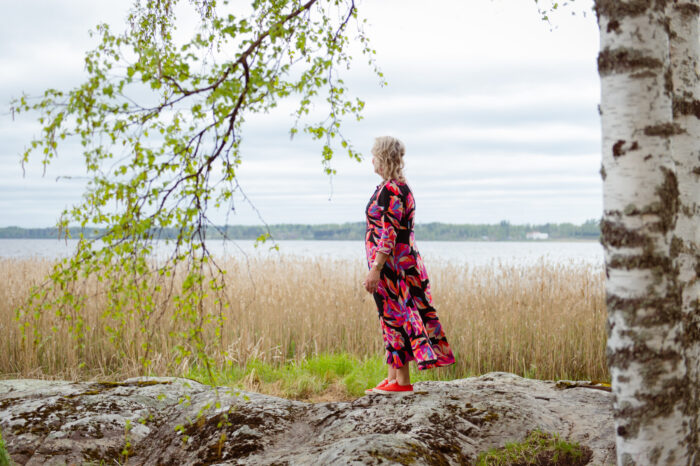
Kosonen advocates for nurse specialisation. A nurse trained specifically in foster care could offer stronger support for carers and residents alike.
Currently, Finland has approximately 250 foster care homes for the elderly, and the number is steadily increasing. In 2021, over 3,300 elderly individuals benefited from this model, supported by thousands of caregivers. Kosonen has also introduced the concept to colleagues in Estonia and Zambia, demonstrating its adaptability across cultures.
“Finland has been called a laboratory for ageing,” Kosonen says. “We can inspire others by demonstrating what good ageing looks like in an age-friendly society. We have a significant elderly population, and now we must ensure they live good, meaningful lives as part of a community.”
For Kosonen, this mission is deeply personal. Her own grandmother was an advocate for elder foster care, and later became a resident herself. Kosonen was by her side through her final days.
“When it was her time to go, she told me I was exactly where I needed to be,” Kosonen says.
A global vision
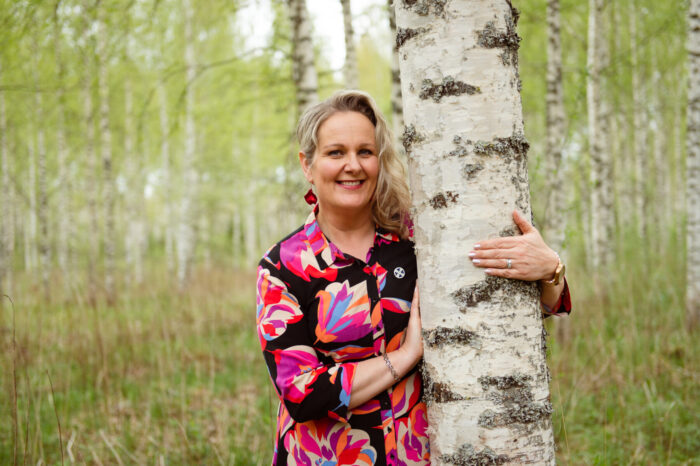
Kosonen hopes to see nursing and foster care working side by side to provide better support for the elderly.
At the time of writing, Kosonen’s work is gaining increased recognition, and Finland is hosting the International Council of Nurses (ICN) World Congress in Helsinki (in June 2025). Nearly 7,000 nurses from around the world are gathering there to share ideas.
Her model, developed with the Foster Care Association of Finland, is living proof of what compassionate, community-based care can achieve. It’s a vision for a future where ageing means not just surviving, but thriving – with dignity, connection and joy.
Text and photos by Emilia Kangasluoma, June 2025
